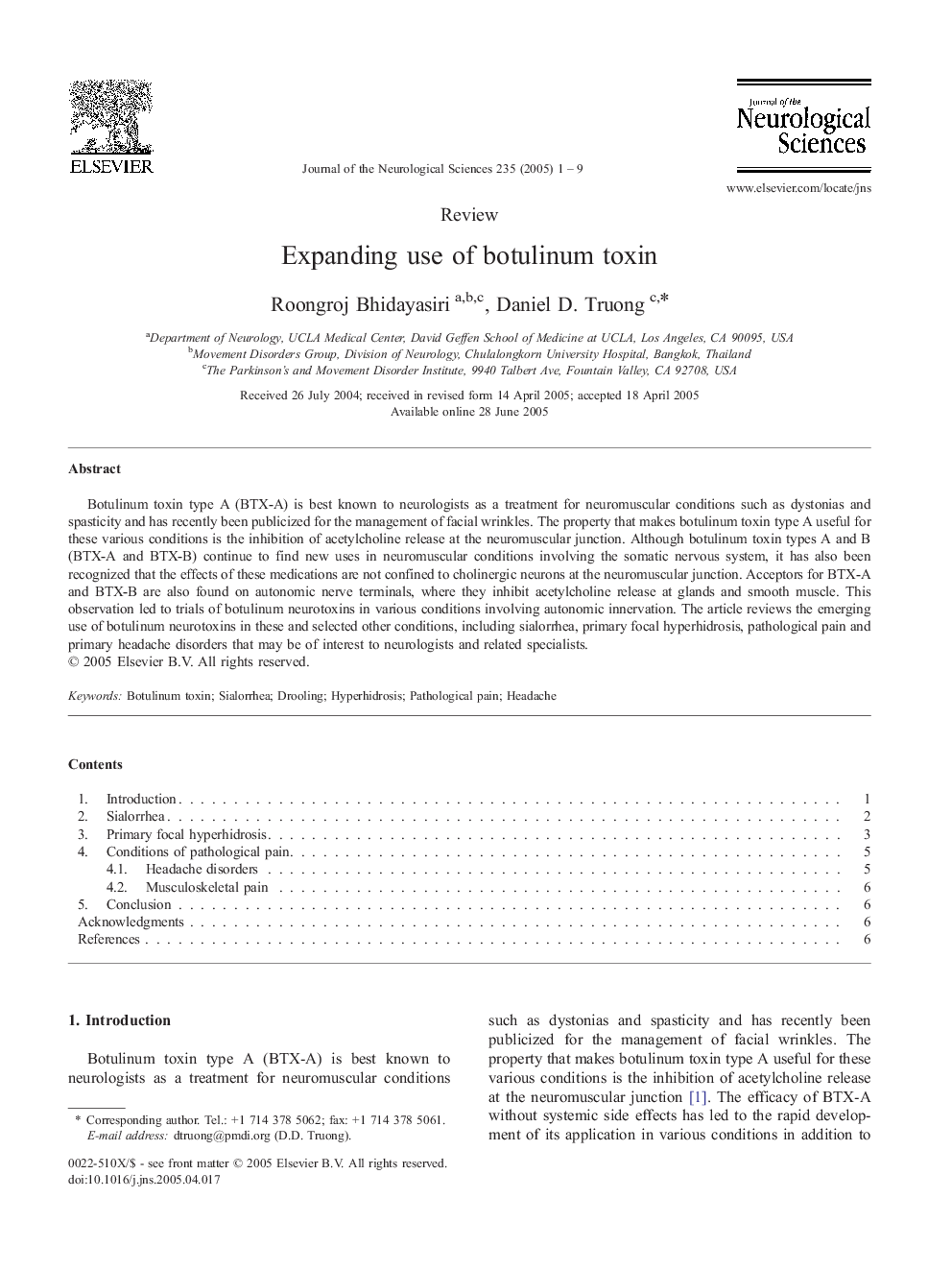| Article ID | Journal | Published Year | Pages | File Type |
|---|---|---|---|---|
| 9880262 | Journal of the Neurological Sciences | 2005 | 9 Pages |
Abstract
Botulinum toxin type A (BTX-A) is best known to neurologists as a treatment for neuromuscular conditions such as dystonias and spasticity and has recently been publicized for the management of facial wrinkles. The property that makes botulinum toxin type A useful for these various conditions is the inhibition of acetylcholine release at the neuromuscular junction. Although botulinum toxin types A and B (BTX-A and BTX-B) continue to find new uses in neuromuscular conditions involving the somatic nervous system, it has also been recognized that the effects of these medications are not confined to cholinergic neurons at the neuromuscular junction. Acceptors for BTX-A and BTX-B are also found on autonomic nerve terminals, where they inhibit acetylcholine release at glands and smooth muscle. This observation led to trials of botulinum neurotoxins in various conditions involving autonomic innervation. The article reviews the emerging use of botulinum neurotoxins in these and selected other conditions, including sialorrhea, primary focal hyperhidrosis, pathological pain and primary headache disorders that may be of interest to neurologists and related specialists.
Related Topics
Life Sciences
Biochemistry, Genetics and Molecular Biology
Ageing
Authors
Roongroj Bhidayasiri, Daniel D. Truong,
